Three Approaches to Shooting a Classic Screwmount Leica by Khoa Tran
See Khoa’s Flickr HERE
Before the introduction of their famous M-system of cameras and lenses in the 1950s, Leica (then Ernst Leitz DRP) produced a rangefinder system now known as the Leica threadmount, screwmount, or, simply “Barnack” cameras, after their inventor, Oskar Barnack, who developed the original Leica camera in the 20s and was one of the pioneers of 35mm photography.
Henri Cartier-Bresson developed his famous street photography style with one, and the mount was adopted by Canon, the Soviet Union camera makers, and a whole host of others. Though the youngest Leica screwmount cameras are now at least sixty years old, they remain plentiful and are inexpensive, relative to the more sought-after M-series cameras and lenses.
[photo: Leica IIIc with Summitar 5cm f/2, shot with a Nikon Coolpix P6000]
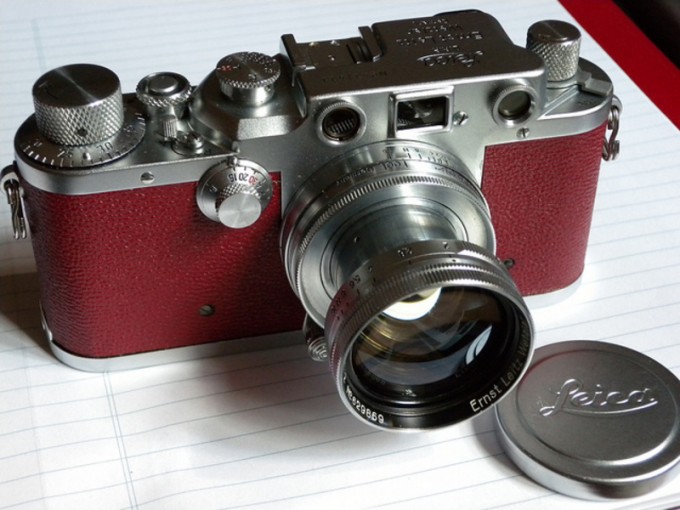
These cameras are steeped in history and romance. My own Leica IIIc was made in 1946, in allied occupied West Germany. It’s quite an understatement that the world was different then: the world powers had been rearranged, and the post-war boom in the first world was just getting into swing. Many lives had been lost, and many more would begin anew. I also have a Leitz 3.5cm Elmar lens, which, according to a serial number lookup, dates to 1939. One can only imagine what this lens has lived through. At the same time, a Barnack camera is cold, and practical, though in no way inelegant and un-beautiful. The top plate of the camera is reminiscent of the funnels and superstructure of an early 20th century dreadnought battleship. Made of nickel, steel, brass, and chrome, the camera is solid.There is no plastic of which to speak. The best description I’ve read is from Stephen Gandy, who says that these cameras are like “mechanical jewels.”
Shooting a Barnack camera isn’t incredibly difficult, but does require quite a few more steps than with modern cameras. First, there’s no film advance lever, but you have to use a comparatively slow knob to advance the film and cock the shutter. Secondly, you can only change the shutter speed once the film has been wound and the shutter cocked. Thirdly, the rangefinder and viewfinder are in separate windows. You have to focus first, then flick your eye over to the viewfinder to compose. Lastly, there is no hinged back to the camera, and the film, which you need to trim to fit beforehand, must be loaded from the bottom. Imagine being a photojournalist being shot at, while you’re trying to load your camera…
So I’ve thought about things, and have come up with a few ways of look at shooting with a screwmount Barnack Leica.
i) As a Point-and-Shoot Camera
I think, really, if Cartier-Bresson were alive today, he’d shoot with a camera phone or some sort of digital compact. He valued composition and rhythm and timing over technical image quality. His oft-underexposed, and ever-so-slightly-out-of-focus shots never killed anyone, and have become regarded as classics. So one way to get around the camera’s slow operation is to preset your focus and pre-expose for a given shooting condition. The adage “f/8 and be there” and the “Sunny 16“ rules work very well if you are willing to give up a tiny bit of pixel-peeping bragging rights, and if you accept that you can, with most negative films today, get two stops over and one stop under of exposure latitude at the expense of some dynamic range.
[photo: la rue du st-sacrement, Leica IIIc and Summitar 5cm f/2 on Ilford FP4+, developed in Caffenol C-M]
[photo: pass me by, Leica IIIc and Summitar 5cm f/2 on Fuji Neopan 400, developed in Caffenol C-M + table salt]
[photo: jean-talon, Leica IIIc and Summitar 5cm f/2 on Kodak Tri-X, developed in Caffenol C-L semi-stand]
ii) As a way to develop one’s “photographic skills”
A Barnack camera has no light meter, like most M-cameras, but is also significantly slower to operate for the reasons mentioned earlier. However, one can also look at it as: “if I can keep up with a moving subject whilst focusing wide-open, or learn to shoot slide film (which has basically no exposure latitude) without a light meter, those might be some worthwhile skills to apply elsewhere to “modern” photographic equipment.” Sure, you can look at it as being able to do arithmetic without a calculator. It’s not essential, but damned useful.
[photo: pour, Summitar 5cm f/2 on Arista Premium (aka Kodak Tri-X), developed in Ilfosol-3]
[photo: au coin de mill et riverside, Summitar 5cm f/2 on Fuji Sensia 100]
[photo: the droughte of march hath perced to the roote, Elmar 9cm f/4, Fuji Sensia 200]
iii) As a portrait and people-shooting camera
With the usual considerations for parallax on a rangefinder camera, a Barnack Leica can be a wonderful portrait camera. The lenses from that era may not be as pin-sharp as modern equivalents, but their signature (in addition to whatever “flaws” may have been picked up over the years) and rendition can be very special, and unlike anything made today. You might also get a positive reaction from your subject, using such an unusual camera, and this can only be a good thing in establishing a rapport and connection with him or her.
[photo: “m”, Summitar 5cm f/2 on Kodak Tri-X, pushed to ISO2500 or so in Caffenol C-L semi-stand]
[photo: “tessa,” Jupiter-8 5cm f/2 on Kodak Tri-X, pushed to ISO800-1250 in Caffenol C-L semi-stand]
[photo: “safe,” Summitar 5cm f/2 on Kodak Portra 400]
Any classic camera, well cared-for is a thing of beauty. In the case of my IIIc (literally, in the EverReady case), I found part of the box of what must have been the last roll of film shot by the previous owner of the camera. It was a Kodak colour film of some sort, ISO64. Was it Kodachrome? Was he or she the original owner? Has this camera lived a relatively uneventful life, or what, really, has it seen in its 66 years of existence? Thinking about all of this makes me feel less like a camera-owner, but more of a steward. This camera might belong in a museum or a collection, but I can still use it to make images that are satisfying and beautiful (to me, at least!). As long as film is still available, it might even outlast me; could anyone make this claim of any modern digital camera?

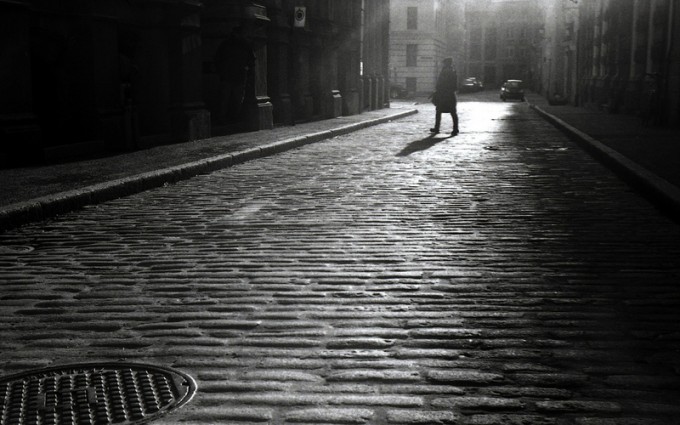
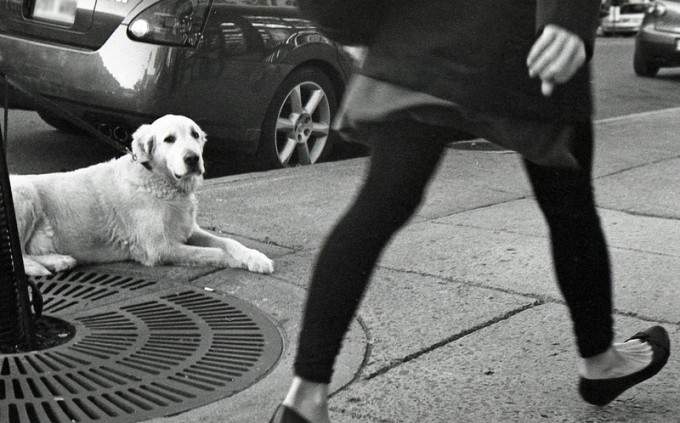
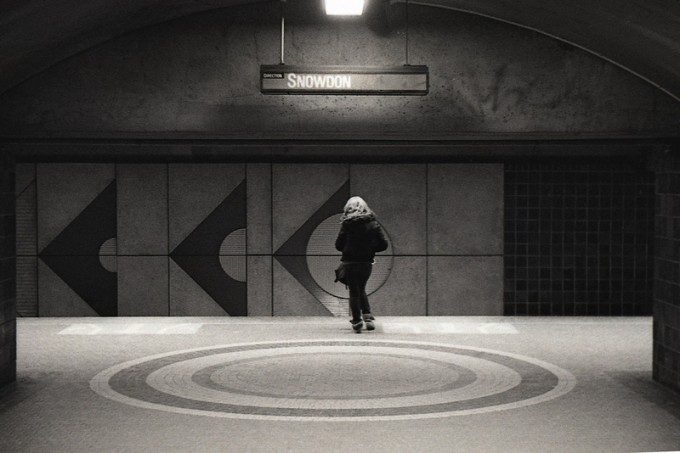
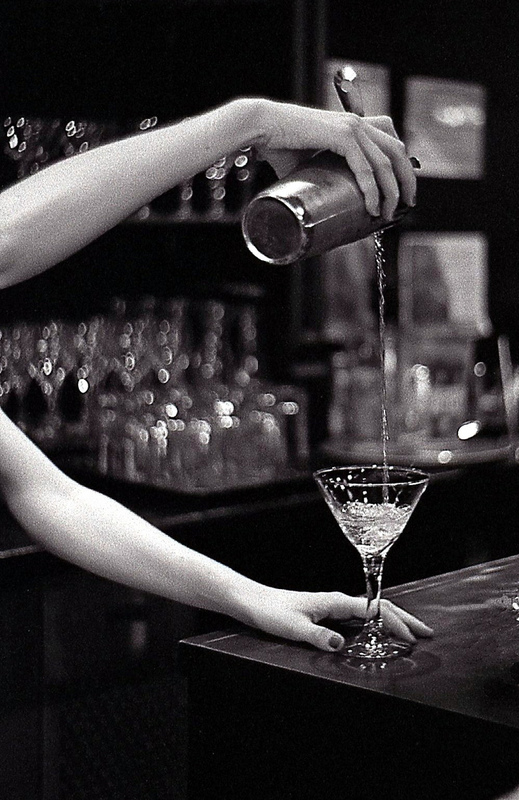
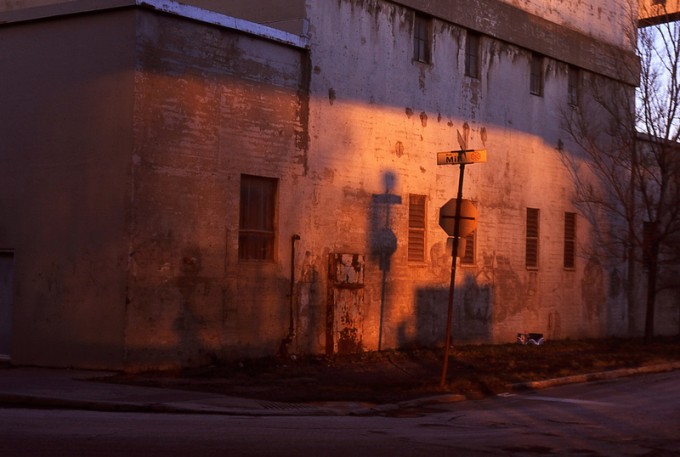
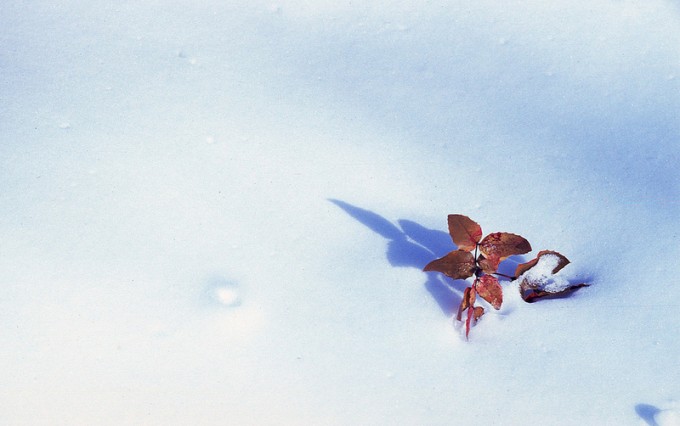
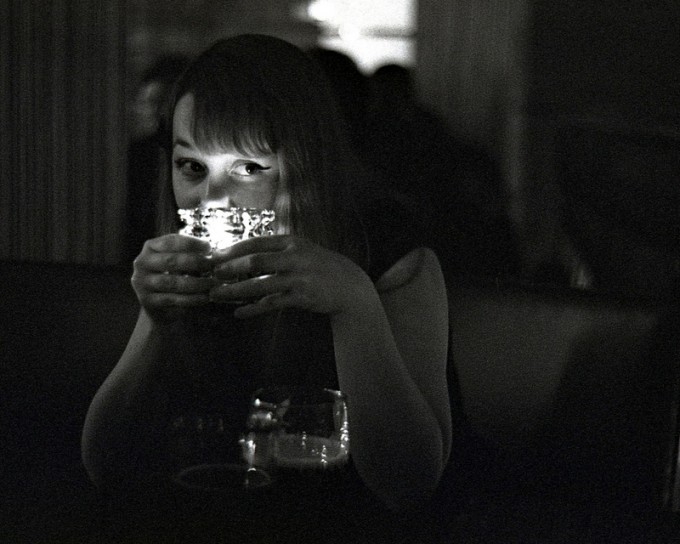
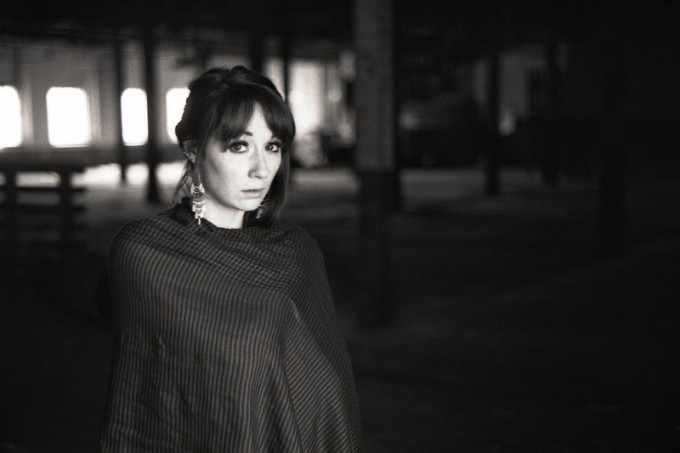
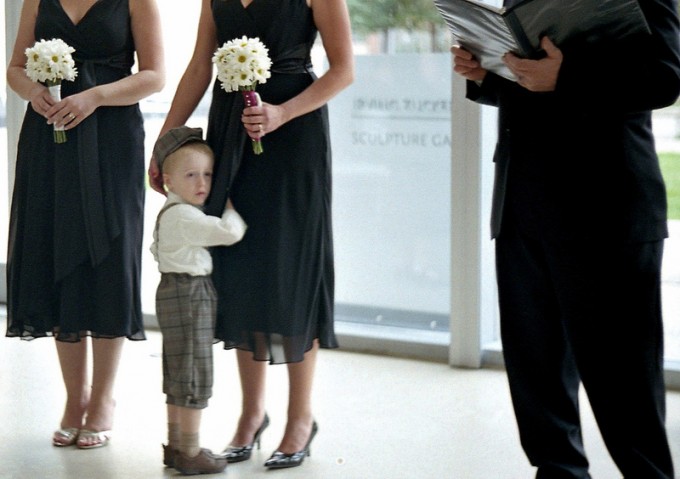


I’m glad this article is still available (in 2016). Enjoyed it very much! The shot of the girl holding the candle (I think), is a stunning photo! It stopped me in my tracks! Well done!
Ditto, ditto 2017! So I hope there are others looking, too. And how many hotographers can title their photos with a straight quote from the original text of Chaucer’s Canterbury tales? Very apposite.
Thank you for a great article. I haven’t read all the comments so forgive me if I make a redundant comment. I have heard the “what would Henri use today” question before and it almost always goes to a iPhone or similar device but I actually have to disagree. First in the area of focus. I do use zone focusing but try to hit the apex of the focus to my subject. Zone focusing lets you take the picture when you want to. Henri’s “decisive moment”. Even the fastest DSLR at focusing still has to wait for a decision of is this the moment I want to capture and then acquire focus and then take the picture. You can only imagine how an iPhone would frustrate Henri and the decisive moment to no end. I could see him throwing it in the river after a few hours with it. Secondly is depth of field. We have fallen into a “point of focus” mindset in our pictures. We set exact he the point of focus we what the viewer to appreciate but let the depth of field fall subjet to the exposure settings. If we do concern ourselves with depth of field we purchase some kind of art lens and just get rid of 70% of the makeup of the picture. Bokeh, bokeh, bokeh. Zone focusing forces us to consider each time how much DOF. Suddenly our photography style changes from a point of focus style to considering what areas I want in focus and where I want the focus to slowly remove itself. While an argument can be made an iPhone would let Henri concentrate on framing, it ignores his two biggest precepts, the decisive moment and depth of picture. Henri developed a style of waiting and letting the subject enter his area of focus, frame, etc. He had a previsualation of what the picture might look like if entered his frame. He saw the picture before the subject ever arrived. Today we decide the picture after the subject has arrived and the we decide on the framing, focus, acquire the focus and finally take the shot.
This is a great essay about a lovely camera. I recently acquired a IIIb and 5 cm Summarit. I put one roll through it and was quite pleased with how it turned out. I’m looking forward to shooting more with it this spring.
There’s a charm about using those older cameras and a sense that one is holding a piece of history in one’s hands. The lenses are not as sharp or perfect as modern lenses, but that’s fine. They’re perfectly adequate and they reflect the state of the art decades ago. If you use one, you accept it for what it is.
I really like you photographs. The one of the woman pouring the cocktail is fantastic!
As a Photojournalist in the late 60s,early 70s,, Young one 16yrs old working for a small newspaper, then soon at 17 yrs old moved to the Arizona Republic ( I thought the Big Time(It was )) we were bucking the system shooting the new Nikon 35mm slr cameras (Nikon F) !!!!!!! I still own a camera much like yours and shot many rolls thru it (need to find it) After carrying two bags of kit around for years and all around the globe. Well enough of the reminiscing… I now carry a leica X2 and seldom leave the house without it !!! YOU CANT TAKE THE PHOTO WITHOUT HAVING IT WITH YOU !!!! Your photographs are of that beautiful leica quality,and thoughtful composition !!!!!!! I am sure that you have looked at Henri C. Bresson, well the list goes on who used the same kit as You . Best to You Keep shooting !!!!!! 🙂 John Young
The other day I was sitting across from my fiancee over a pint and declared ‘I love you so much,you’re gorgeous and I’ll be with you forever’.Then I looked up and she responded ‘Stop talking to your bloody Leica!’ It’s true that screwmounts really get under the skin and it’s rare I leave the house without my 1938 III with its 3.5 Elmar of the same vintage.Digital just isn’t for me.I have no need for endless menus.All I need is a few rolls of film and a beautifully engineered machine to put them in.
now the prices of Leica IIIs will go up 🙂
time to find one fast!
Thanks for making me feel guilty that my IIIf sits on top of a bookcase while I am out shooting with my5DII. The Leica and its Yashica YF(Leica clone) predecessor taught me much. I’m afraid my human light meter skills have faded with disuse but once upon a time many rolls of Agfachrome, mostly well exposed, we’re shot that way. For certain types of photography the rangefinder is the best( not things that bring parallax into play) and certainly they don’t advertise themselfs like a modern DSLR does. There is still film in my fridge so your example may move me to shoot some.
If my writing and photos can inspire someone else to take up film again, that would be a wonderful thing to me indeed!
Hi, I enjoyed your post. My main film camera nowadays is 80-yr-old Barnack (II).
Although I don’t have a Leica lens, I always enjoyed using my Elmar lens.
And Summitar and Summicron (collapsible) lenses made me amazed at their results.
Your images are beautiful and that made me shoot more films. 🙂
I still make lot of mistakes from getting correct exposure, but I learned many things from those mistakes and that gave me more freedome when I take snaps.
I believe that my Leica II is my best snap machine ever. 🙂
Cheers!
That’s amazing that you have such an old beast, that still works. Take care of it! Cheers.
lovely pics
the boy holding his mother is fantastic
i dont think there is a difference between film and digital now adays, it is more in our minds and in our belief.
No difference? Of course there is.
Can’t see the difference… can’t hear the difference… [Really???] This perceptual “homogenization” phenomenon in some folks (actually, quite a lot of folks) continues to amaze me. Can it all be belief and bias trumping evidence?
I think it is as much about the lenses as the camera. Don’t own a III — instead one of those Voights… but the images I get with old summacrons and elmars are often more beautiful than the technically better DSLRs…
And you can now use your cellphone as a lightmeter, set the camera, and then shoot away.
I like modern digitals… heck I scan everything anyway… but shooting slides with a rangefinder is something that keeps your skills up.
http://pukeko.net.nz/photo/2012/04/dunedin-peninsula/
Hey Chris… That light meter app — what do you use (related accessories included) or recommend as best for either iPad Touch or Android? Do I still need the old Sekonic or Minolta? Thanks for any tips!
There’s something about Film, it’s REAL.
I mean, Digital images fail to turn me on as they’re Fake, they’re not real, they’re lines of code in a computer program manifested as pixels on a screen – NOTHING, just like a dot.com company – zero assets, based on ZERO, software in the ether of cyberspace, rather than REAL substantial companies which have a solid REAL product.
Film can be touched, held up to the light, projected, scanned, printed in many ways, smelt, and can be kept – it’s REAL whereas digital is, well, ether..
Hi again, Ibraar (…just picked up a G1 with “4 rolls” total through it, BTW!)… You know, it’s much the same thing in the case of music and audio formats. I’m part of that (now) often disparaged breed that likes to sit in a chair and really LISTEN to music of quality: “You mean you guys just, like, SIT there and… listen [How weird!]”? And, of course, understanding and owning the gear that can reproduce faithfully something other than radio-pop, that can communicate a performer’s emotion and the intent of a composer… well, that makes one a “snob” in many circles these days, irrespective of the fact that I could assemble a fine little vacuum tube based system for someone for just one kilobuck that could fairly be said to satisfy the above criteria for quality, at least with a limited-but-varied range of program material.
The music-as-aural-chewing-gum crowd doesn’t get it; nor do computer nerds who review the cameras and “audio systems”. It’s a pretty immature and vulgar society that determines what kind of art and entertainment we mostly get these days — for those of us who don’t live a subway ride away from Lincoln Center. People too ignorant to have respect for things of value.
Now, the music is moving to servers in the home. The detestable CD/”jewel” box gets replaced by… well, exactly the problem you’ve described. What an event it used to be to bring home a real vinyl record from a real browser-friendly record store, to hold the object in your hands, to read liner notes without a magnifying glass… not to mention oogling a Julie London cover shot! Some people, of course, will think this is some kind of Luddite/anachro-phile/”retro” thing: you and I both, I might surmise, know that this is no such thing. Some things just have inherently more value; but as Oscar Wilde said, “Some people know the price of everything, and the value of nothing.”
Whether or not a 35mm format lens from 1950 has a special kind of artistic statement to make in the 21st Century may be a debatable point (on which I will not take sides) — but modern multi-coatings alone make such a difference, I’d want to feel VERY sure I knew exactly what “statement” I was intending to make and whether I was confident I could realize that vision in a print or on ‘flickr’ before I’d ever want to give up the modern advantages. Not so with vinyl, which easily trumps all the usual contemporary digital formats in performance, done correctly. Even non-enthusiasts hearing vinyl on a truly synergistic high end, vinyl-oriented system for the first time — or for the first time in a long time — typically use words like “a religious experience” to try to describe their shock. Setting up and maintaining a modern high performance cartridge is, admittedly, a pain in the behind. And those old records you buy need cleaned. But yes, then you really have something substantial. And heck, standing knee deep in snow at 12 degrees F. with the wind blowing, waiting for “the light” — that’s a bit of a pain, too. We do it for the rewards.
Great article, excellent photographs with the feel and mood lacking in many others. Superb piece of art the camera is too, I have been eyeing up a Contax IIIA with 50mm f1.5 – which i think this Leica compares to in many ways. (http://www.ffordes.co.uk/product/11082610002281)
I’ve been shooting with an Olympus Pen F using EV to assess exposure and i love the whole experience.
I own 2 Leica Screwmounts cameras. They’re fantastic. Especially my 1933 Leica with 50 Nickel Elmar. The photos above, are nothing special. I find it funny when people get bowled over by someone’s test shots.
He doesn’t claim that they’re special….he’s showing the photos as a narrative to go along with what he’s talking about in using the camera, and to illustrate some points. I get so, so tired of people criticizing people’s photographic work in these articles…doing so completely and utterly misses the point. Haters come on and act as though the writer claims his/her work to be brilliant – and that the writer even wants critique of their photographic skills when they’re not presenting it in that context. And, for the record, there are obviously many here who do think quite a bit of the work is nice…so to quote The Dude in the Big Lebowski, “…that’s just, like, you’re opinion…man.”.
I am also a user of screw mount Leicas, and use either my 111G, 111F or a converted Leica 1 on a regular basis. Ken Rockwell has the best article on trimming and loading film in these babies. I love the look and jewel like precision of these historical pieces, and boy are they quite! They are great for street use as you can cradle them in your hand or inside your coat when things get dicey. People either really notice, usually fellow photogs, or not at all, again a good street camera especially with wide angle lenes.
Great article and great shots!
Michiel, I am not saying he should not express his opinion but saying “I am not impressed at all, neither IQ or motive” Isn’t that statement a little too dismissive, don’t you think. I’m not sure where politeness is, in that sentence. If somebody says that about your work, how do you respond?
The reason I’m asking for samples of his work is to understand what he would consider as great. We all have a way of looking at the world and but of course we have different views on what is great, beautiful etc.
Hi Robert,
have a look at my reply to Khoa upstairs.
Written words can be missunderstood for example as rude although I only wanted to be completely honest and direct.
I actually don’t know what my style is perhaps I am happy not to have one.
For ex I like both A. Eisenstaet’s Sailor kissing the nurse on V day and Steve McCurry’s Afghan girl.
Best regards
Heiner
Hi Khoa,
Nice article and fantastic images. The images have a feel that screams Leica. Thanks for sharing.
Mo Han
Wonderful words and images. Txs.
Really nice article and great shots. It’s an interesting concept to feel for the camera and all the things its seen, rather than just see it as a tool. Really enjoyed reading this.
I enjoyed seeing your images. Thanks for sharing!
I have only just begun to explore film again. Though I developed film as a school-boy in 1975-1976 as part of a journalism class, I did not buy my first serious film camera until last year. At work, I shoot color digital images, which must be as technically correct as possible, for evidentiary purposes. Film, especially B/W, shot more creatively, is a way of separating public duty from my personal life/art.
BEAUTIFUL ARTICLE! I enjoyed every word of it! I like some of the photos, too!
I have a similar bond to my Zorki 4, a soviet spin on the IIIc, with a range finder/view finder. I bring my dlux 4 along as a meter and do test shots (not so good at sunny 16 yet), so I have a film/digital comparison for most of my shots. Needless to say, the Zorki blows away the dlux 4 for depth, tone, and general soul. I do often miss focus, especially with the Jupiter 9 at f2, but when I nail it, the picture seems alive. Here’s my latest: http://www.rangefinderforum.com/photopost/data/500/photographer2.JPG. Also get quite sharp and clear at f8 with my Industar 22 50mm collapsible: http://www.rangefinderforum.com/photopost/data/500/petaluma_Large_.jpg
Love the cocktail shot Khoa. Very interesting article and perhaps we would all be more selective and confident photographers if we shot at least some film.
What a lovely, well written and structured article, thanks for this.
Colin
What a great article and great shots. Photography in a nutshell, bravo Sir!
So much rubbish is posted on this (and many others) site about the must have latest camera (yawnnnn), lens sharpness, high ISO test capabilities and other guff like that this is really a refreshing change. Get a good camera, does not matter one jot whether it is digital or film (who cares?) and go shoot. Then shoot and then shoot some more – learn your craft and your tool. Produce *your* vision.
As you said, if HCB were still alive and shooting he would possibly be using a phone ….. and his photographs would still be better than anyone with a bag full of the latest, expensive tech! 🙂
I am privileged to own a pristine work of art – a 1939 IIIB with a 1937 vintage 50mm Summar. The M7 I have likewise is a thing of beauty and a joy to use – my M8 is so-so
Sorry guys,
I am not impressed at all, neither IQ nor motive – my only keeper would be the cocktail glass one.
I also don’t see the the special quality for “film” in these photos. I am a digital guy although I have books and mags by LIFE and admire many of their historic photos with film.
Here I think the photos are just blurry, half of them not well framed.
Ok, as “historical” photos it is another thing, maybe “grammophone” but not vinyl (I am a “vinyl junkie”)
sorry
Heiner
Wow! dude such strong words. Can we please see some of your work so that we can be enlightened to what great photography is about.
Heiner is allowed to express his opinion, and he did so in a polite way. I’m not aware of a rule that says you have to be a great photographer to be allowed to voice criticism.
That said, I don’t agree with Heiner.
I like most of the images for their unsharp, moody quality. Sharpness has no merit in itself; missing the intended point of focus is just bad craftmanship (usually demonstrated in the obsessed by full aperture images), but I didn’t see that here.
I’m sorry you don’t like my work, and I thank you for expressing your view.
I disagree, obviously, about the framing and composition, as I consider myself to be very careful about both framing the shot and then cropping the image afterwards. As for the “blurry” quality, this is also a function of the resizing on the webpage. Click on the images themselves, and you’ll see that even though the size is still small, they are significantly clearer.
I shoot a lot of digital too, and regardless of platform, if you don’t like my film work, you probably wouldn’t like my digital work either.
Hi Khoa,
good that you are so open minded. I had a look at your flickr and found lots of excellent photos! For my taste you actually choose my least favorite ones from your flickr page.
There is a second one from the lady with the blanket (tesa) I prefer to the one you selected.
Framing: I completely do not understand the dog photo (nothing on it is fully captured!?!?)
nor the house with orange color.
Without your permission I downloaded the underground photo”SNOWDON” and cropped it a bit. With your permission I would like to post it here but I don’t know how to upload images to this web page.
I am not an experienced photographer but own some eyes for nearly 52 years and use them daily. I still cannot shoot what my imaginary eyes can see but from the many photos I shot I really like several dozens and will have a flickr and a web page within the next few months.
I admire HCB as well as Ansel Adams but I love David LaChapelle. What I cannot understand is that many people shout “HCB is alive” as soon as there is something unsharp in bw on the web.
Sharpness is not a quality in itself, as I said I have books and mags from LIFE where a large number of photos are no sharp but nevertheless excellent.
Art is actually only a question of taste or of money and my taste is never very mainstream, not only in photography but also in music where like Beethoven and Adele, Miles Davis and Johnny Cash (and I actually listen to them all, sometimes in this order) –
so what? Life is so divers and diversity is the beauty of life
Saying this .and going through your flickr again I have to say you are also very divers in your shooting styles: for ex in “most interesting” the bw photo “Tweed” in between the 2 fountain photos followed by the infrared rideau river photo – and then “Shadows on the Hull” a masterpiece!
Best regards
Heiner
Thank you for your clarification and for visiting my page. I hope that having seen the larger versions, you can see that the “blurriness” you describe has more to do with the web-resizing process here than the photos themselves.
As for framing… I chose the photo of Tessa because of the two similar ones, I liked her placement in the frame amongst the pillars and background window better, and the look was more of the “coldness” she was actually feeling (she was trying to warm up after a long day of shooting). For the dog photo, I was trying to capture his reaction to people passing by, having been left outside by his owner. The crop is intentionally tight to 1) show tension and 2) play with frame divisions and movement and lines. I’ve learned that sometimes, what you don’t show is as important as what you do. Finally, “au coin de mill et riverside” is an area of winter light inside of industrial shadow.
Please send me the cropped photo via e-mail (you can find it in my profile page). I’d prefer it not be posted publicly, please.
Although I’m admittedly disappointed that the shots here don’t do anything for you, I appreciate differences in preferences and opinion, and I’m glad you do seem to like some of my other work. What I do can be diverse, but I don’t think I approach shooting things all that differently due to platform or equipment or film or digital.
Heiner, mate, horses for courses and that, some people think Ansel Adams was over rated, others think he was the dogs bollocks.
I disagree with you completely though, I think you may need to invest in some specs mate, only one of the subjects in these are ‘blurry’, (the little lad with flowers) but his look says it all – you may have missed that, as for the the framing, it’s superb, the feel and look, tones and contrast is spot on.
IQ isn’t everything, in fact if you read the original piece here it states exactly that!
Absolutely brilliant – great images too.
wonderful post! All those photos are awesome. Can i ask, what if i don’t develop film myself?
Fantastic article all round
Wonderful images and a nice little summary of reasons to dip a toe into old school rangefinders.
I do think you left out a fairly useful bit o’ info though. 🙂
There isn’t an intrinsic need to risk the functional travails of 40, 50, 60, or 70 year old equipment to gain the all manual, film shooting, leica thread mount camera experience. In the modern era, Cosina has been making a varied array of RF cameras and lenses under the Voigtlander brand name. Their current lineup is mainly M mount, but new ltm lenses are readily available – lenses with modern optics, modern coatings, and father time hasnt mucked with their glues, coatings, and lens surfaces. Further, the camera bodies let you trade the swiss watch tactile experience for modern shutters and bright n beautiful viewfinders.
I have two LTM Voigtlanders I use with my gloriously fun M8, a 28mm ultron & a 75mm heliar, and I Very Much like using them.
CameraQuest offers a range of CV cameras and lenses and the website has a nice archive covering all the lenses and cameras CV has offered over the years.
Sincerely
Richard Ward
My article was titled three approaches to shooting a *classic* screwmount leica, and not “three approaches to shooting a modern japanese rangefinder with a leica screwmount” 😉
I am writing more about appreciating the history and the “spirit” of an old camera, as Jeremy writes above, than about any mechanical film-shooting experience.
However… I have absolutely nothing but respect for Cosina Voigtlander. I think that they’re doing a wonderful thing, bringing modern designs to classic concepts. I think they deserve our support, and I’ve been eyeing the 25mm f/0.95 Nokton for micro four thirds for quite some time now.
These nice elegant photographs makes me wonder why on earth do we keep masturbating around MPs, high ISOs, sharpness…
Thanks for the lecture.
Well said…
These images are superb.All the gearheads who believe that they can only take good photos with the latest and fastest multi megapixel marvel should look at them .They have prompted me to dust down my original Leica 3C and give it an outing–the first for 32 years – but first I have to find some film.
Thanks for a great article
John Shingleton
http://therollingroad.blogspot.com
Best of luck with the first 3C session in 32 years! Let me know how it goes!
I love the images that the old screw mount lens produce… its to bad that there is not a way to use them on a simple digital camera …
To get the film look that I am working for I have been shooting Leica R lens with my Pentax K20 … be so much fun and I ahem gotten the feel I want …
actually david , the closest digital camera that produces almost film like quality is the sigma’s dp1 & 2 both have fixed focal lens’s , take a look at steves review on the sigma dp youll see what im talking about …i have the dp 2s & love it to death .
I do agree that the sigma dp2 is a nice camera … I would love to find a simple digital camera that is small and that could take the screw mount leica lens … something that i could take with me out street shooting …
If you don’t mind a change of perspective, or can just accept it and work with it. I use my Leica lenses quite often on a PEN camera, and again, I find it’s something quite amazing that you can use a lens made in the first half of the 20th century on a camera that was made last year.
Film is awesome. Thanks for sharing.
Much as I love our modern digital equivalents for their convenience, there is something supremely satisfying about operating a wholly mechanical film machine.
Somehow mechanical equipment ‘connects’ in a pleasing tactile sense that digital finds hard to replicate.
Thanks for posting these Khoa!
Great images, and so wonderful to see the ’50’s/’60’s spirit emanating from some of them, particularly #1. The flare in that lens gives an amazing “smoky” quality.
Also interesting to see the differences in film and developing. Sure won’t use Ilfosol on Tri-X (my favourite b&w film); looks awfully blotchy.
Thanks Michiel! The flare in #1 is also due to the fact that it was a hazy day, and the sun was just setting over the buildings overhead. I couldn’t *not* take a photo.
I think it’s safe to say I’m over using Ilfosol, period, actually. It’s a good convenience developer but it’s not really suited to developing faster films. That shot in particular, though is a tad underexposed, and also cropped, so the grainsplotches are probably accentuated by that.
Thanks Khoa! Again, your images rekindled my passion for b&w, albeit with ’80’s Nikon and Contax gear. It’s amazing how using the “old” techniques get the images you can’t achieve with even the best digital equipment, and I’m not even talking about the different feel.
Did you use an exposure meter?
Sometimes 😉
I tend to be pretty good with exposure-guessing outdoors, but less-good indoors. I also have started to change my indoor low-light approach by choosing to shoot wide-open with my slowest comfortable shutter speed, and then relying on caffenol stand development to get usable images out of the film.
I have to say, some of these photos are are some of the best that you have posted on this site.
Film forever!
Beautiful work, it’s refreshing to hear about the spirit of a camera as opposed to its specifications.
Khoa – your judgement was sound! Thanks for the heads up – what a great article.
I have the IIIA from 1936 with a 5CM Summar collapsible. It was cleaned and restored by Don Goldberg (perhaps the best Leica guy anywhere).
I haven’t developed any of the stuff I shot with it since the lens was cleaned and polished…I need to do that asap!! You work is beautiful and engaging – something that is sorely lacking in the world today, myself included.
Good catch on “Snowdon”…great work.
A superb article. Wonderfully written with beautiful images. Very well done!
its the sole enjoyment of photography and an eye for the world around us that is reflected in this post – most enjoyable! The pictures communicate a great atmosphere!
I bought my IIIf on eBay; it belonged to a Canadian soldier – that particular IIIf was made in Canada, at Leitz’ Ontario factory. Its shutter curtains were all pinholed, so I sent it to the States to have new shutters fitted, and its lens polished.
Beautiful: good as new now! It’s great practice: you look at the weather and think “1/125th at, er, f5.6” (though I think my IIIf has 1/100th instead) and you take your shot(s). Then it starts to cloud over, or you go down a darkish alleyway, and think “1/60th at f4″ ..and you won’t see the results for a few days ..and you just make pictures.
You hone your eyes’ ability to distinguish shades of light and dark ..”is it one stop darker here, or two?”
And the magnified viewfinder is so much easier to focus with than an M9! ..or even an M3! And it fits in your pocket! (Many of those older screw-fit lenses are collapsible, and slide deep into the body of the camera ..and then the camera slides into your coat pocket.)
Thanks for reminding us about how great the ‘Barnack’ Leicas are!
Funny you should mention your approach, as that’s precisely how I work as well, often! In fact, in the “au coin de mill et riverside” photo, I was shooting with a friend who was armed with a 5DII, and the conversation leading up to that shot was:
me: “1/100s f/4?”
him, checking exposure with 5DII: “1/100 f/4”
I may have punched the air at that point 🙂
Yup – Khoa didn’t adequately contain his excitement 🙂
— Myke – proud owner of said 5D MkII
Excellent article and the pics are wonderful, especially ‘the pour’ .I think maybe film makes you more thoughtful about what you’re shooting, especially with a camera you truly have to be involved with. Digitally, I seem to be taking more pictures with less keepers…..
Didn’t Capa shoot with a Zeiss Contax at Normandy?
I stand very much corrected. Thank you.
Now that is a fantastic article. I enjoy viewing the images you shared in this post, too. Two thumbs up and thank you. =)
Thanks to Steve for posting this, and to Jason and Boris for the kind comments 🙂
bloody great shots ,now this is what photography is all about !!! as a very proud owner of a iiia i will also attest …these screw mount leicas render the most unique images out of any camera that have ever existed …its like every roll you put through it you will get works of art …..images that will last forever …great article , you made my day !!!!
The beauty of this camera is matched only by the images it has produced!! A superbly written post and most enjoyable. I am fortunate enough to have a iiif which began it’s life as a iiic – a true object of beauty – http://www.flickr.com/photos/52590822@N05/6814382748/
Khoa Tran
thanks for a great and enjoyable post !
Jason, such a beautiful blog you’ve got 🙂
Cheers
Jean-Marc.
Thanks Jean-Marc, very kind of you.